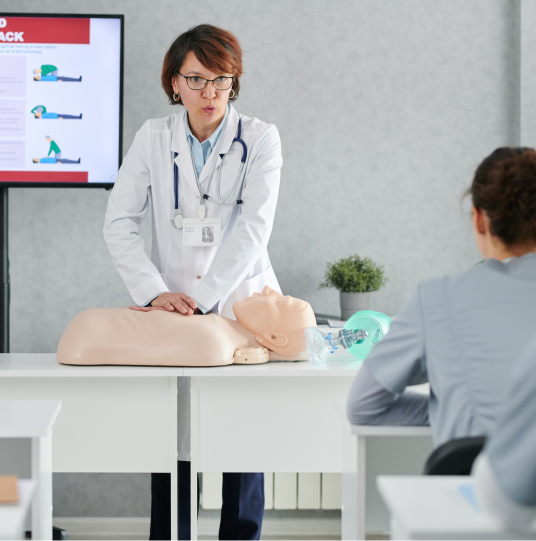Chapter 3: C-A-B
ECC and updated guidelines 2010 updates changed the CPR sequence from A-B-C to C-A-B. Often in the A-B-C method chest compressions were delayed. With the new Compressions – Airway – Breathing method a victim receives compressions faster, providing quicker critical blood flow to the vital organs.
C-A-B Method Video:
C-A-B Method Steps:
The sequence of steps for conducting CPR using the C-A-B method (detailed further in following chapters)
- “C” for Compressions
- Rate of compressions: You should give at least 100 to 120 compressions per minute in cycles (or sets) of 30 compressions and 2 breaths (30:2).
- Depth of compressions: detailed in following chapters for adult, child and infant.
- Chest recoil is vital after each compression.
- “A” for Airway
- Open the airway with the head-tilt chin-lift motion.
- “B” for Breathing
2020 Interim Guidance for suspected or confirmed COVID-19 patients:
In these times when everyone is being affected by the Coronavirus disease (COVID-19), many healthcare providers have limited access to adequate PPE.
Below are the primary interim changes to CPR during COVID-19 times.
PPE should be put on before assisting patients in cardiac arrest.
For Adults:
- Perform at least hands-only CPR after a cardiac arrest event has been identified
- A face mask or a cloth that covers the mouth and nose of the healthcare provider and/or victim may reduce the risk of COVID-19 transmission to a non-household bystander
For Children
- Perform chest compressions and consider mouth-to-mouth ventilation
- A face mask or cloth that covers the mouth and nose of the healthcare provider and/or victim may reduce the risk of COVID-19 transmission to a non-household bystander.
2015 Chest Compression Update
Per the 2015 updates, you should deliver at least 100 to 120 chest compressions per minute (previous rate was 100 compressions / minute). Recent science indicates that more compressions lead to a higher survival rate. This new update sets an upper limit for the chest compression rate, as excessive compressions and depth can adversely affect a patient’s outcome.
2014 Hands-Only CPR
The Hands-Only CPR method is recommended for use on teens or adults that you witness suddenly collapse. This is CPR without the rescue breaths.
You would need to:
- Call 9-1-1 and stay on the phone with the dispatcher as you
- Push hard and fast to give chest compressions. This method is also effective for individuals who have been trained in CPR before but may not remember all the steps of conventional CPR.
*The Good Samaritan Law is intended to reduce bystanders’ hesitation to assist in an emergency.
